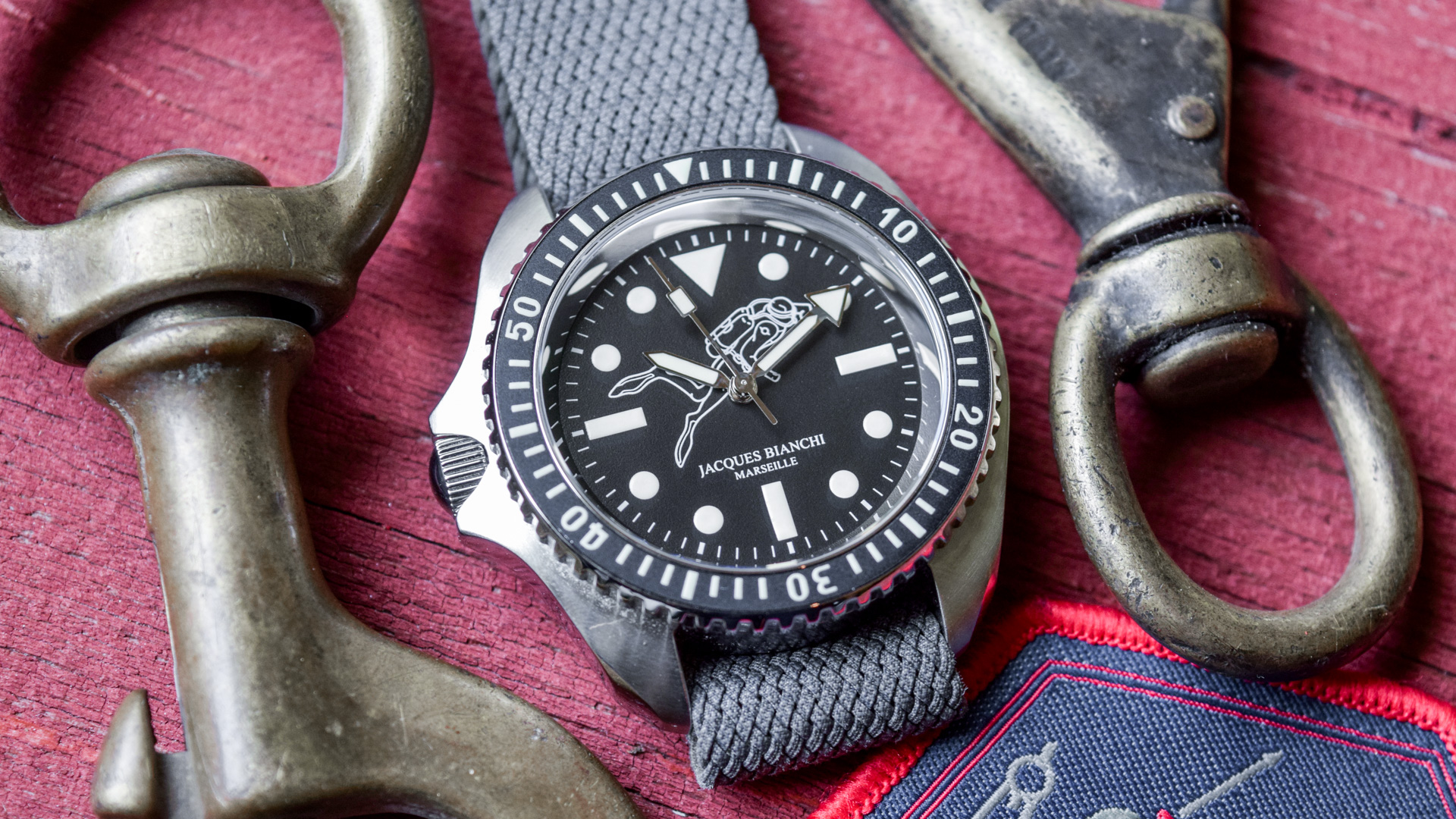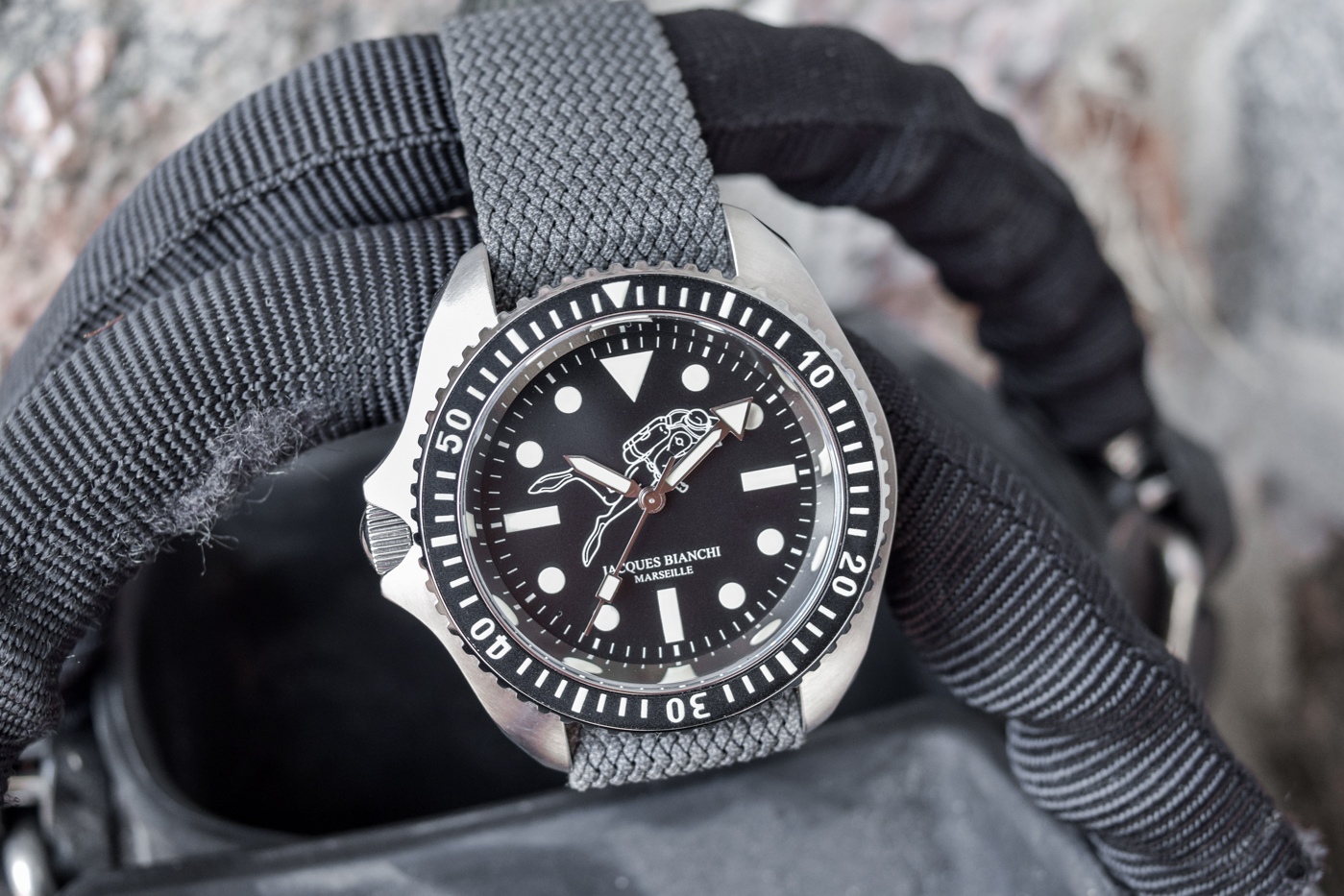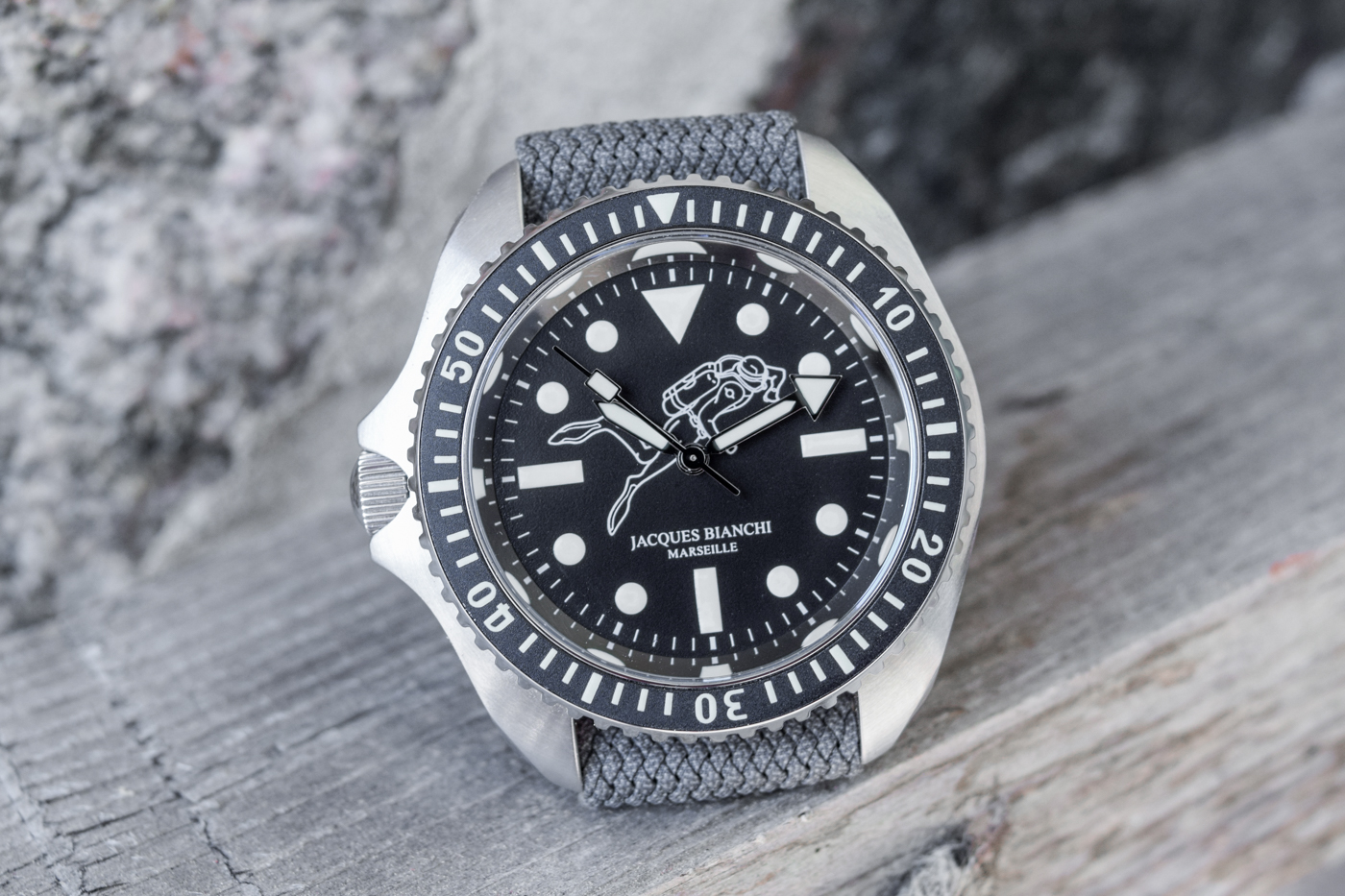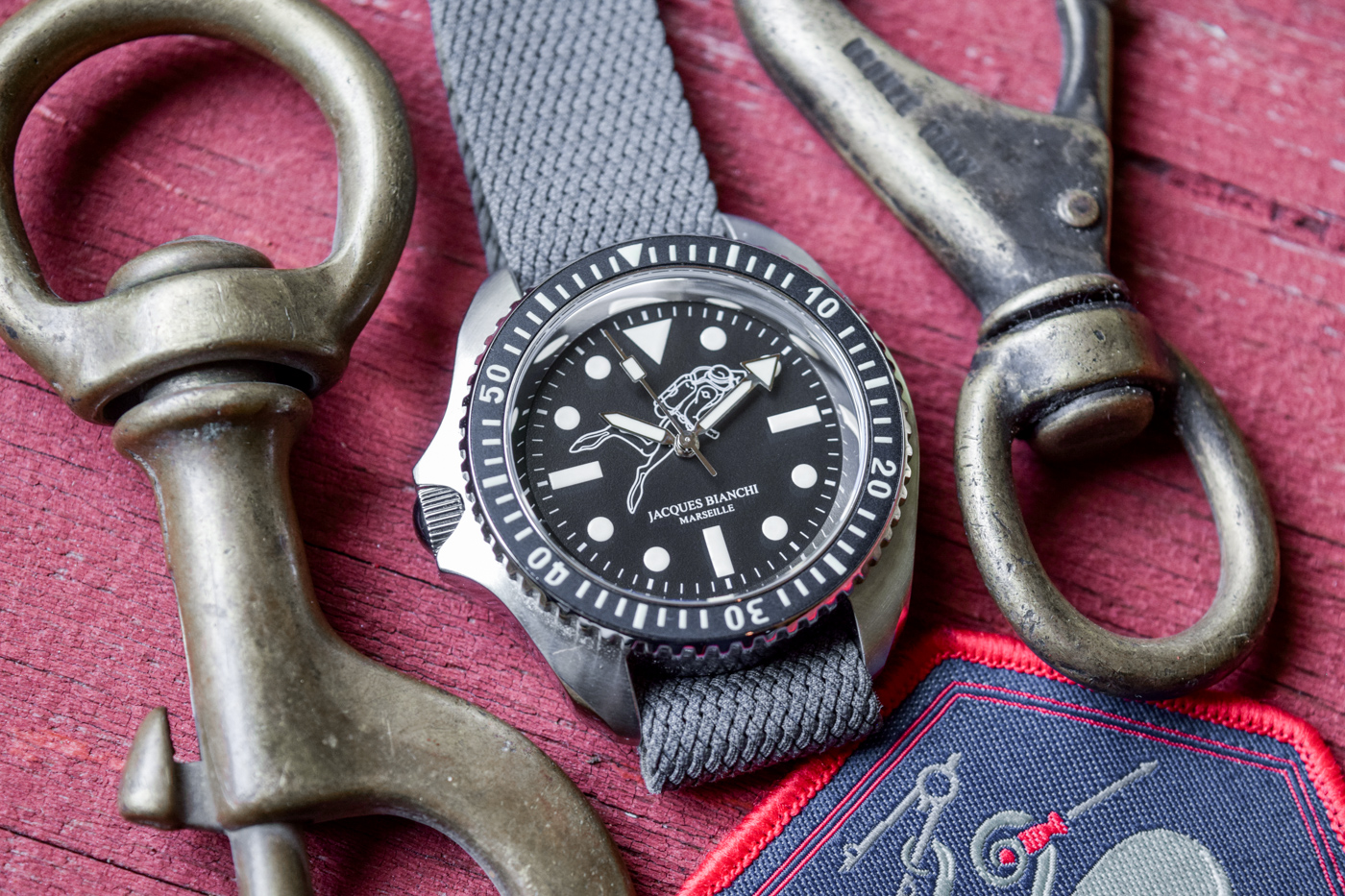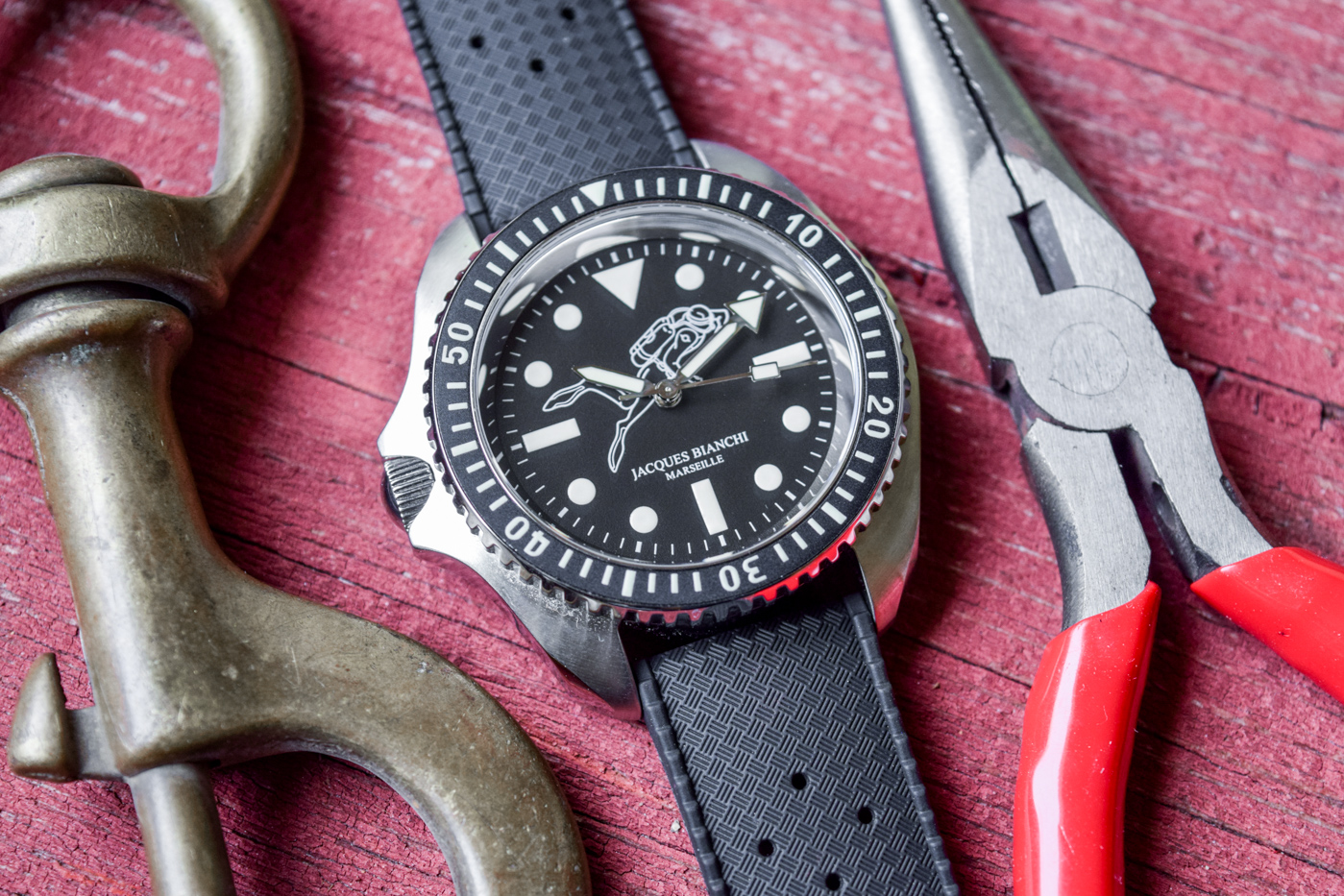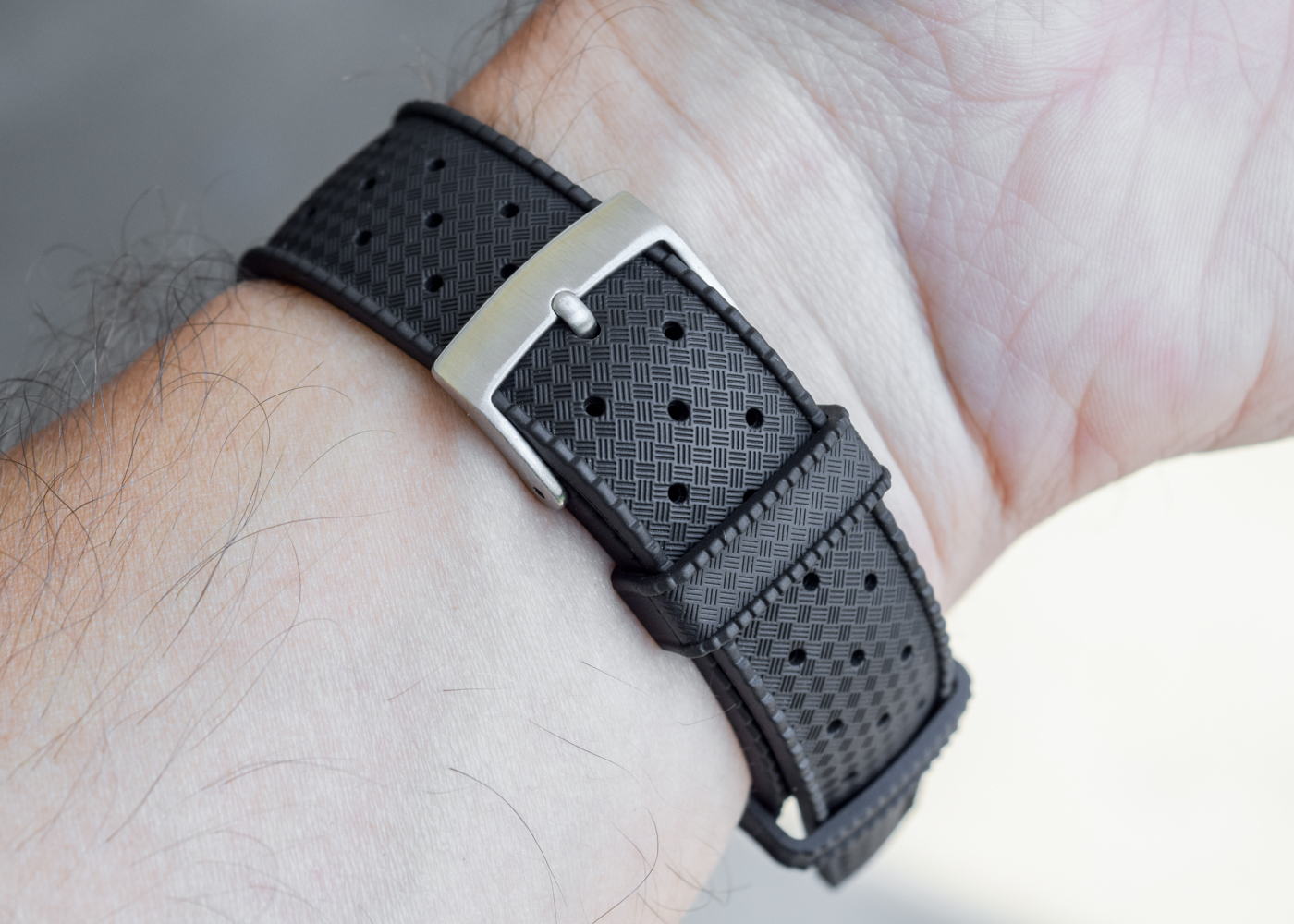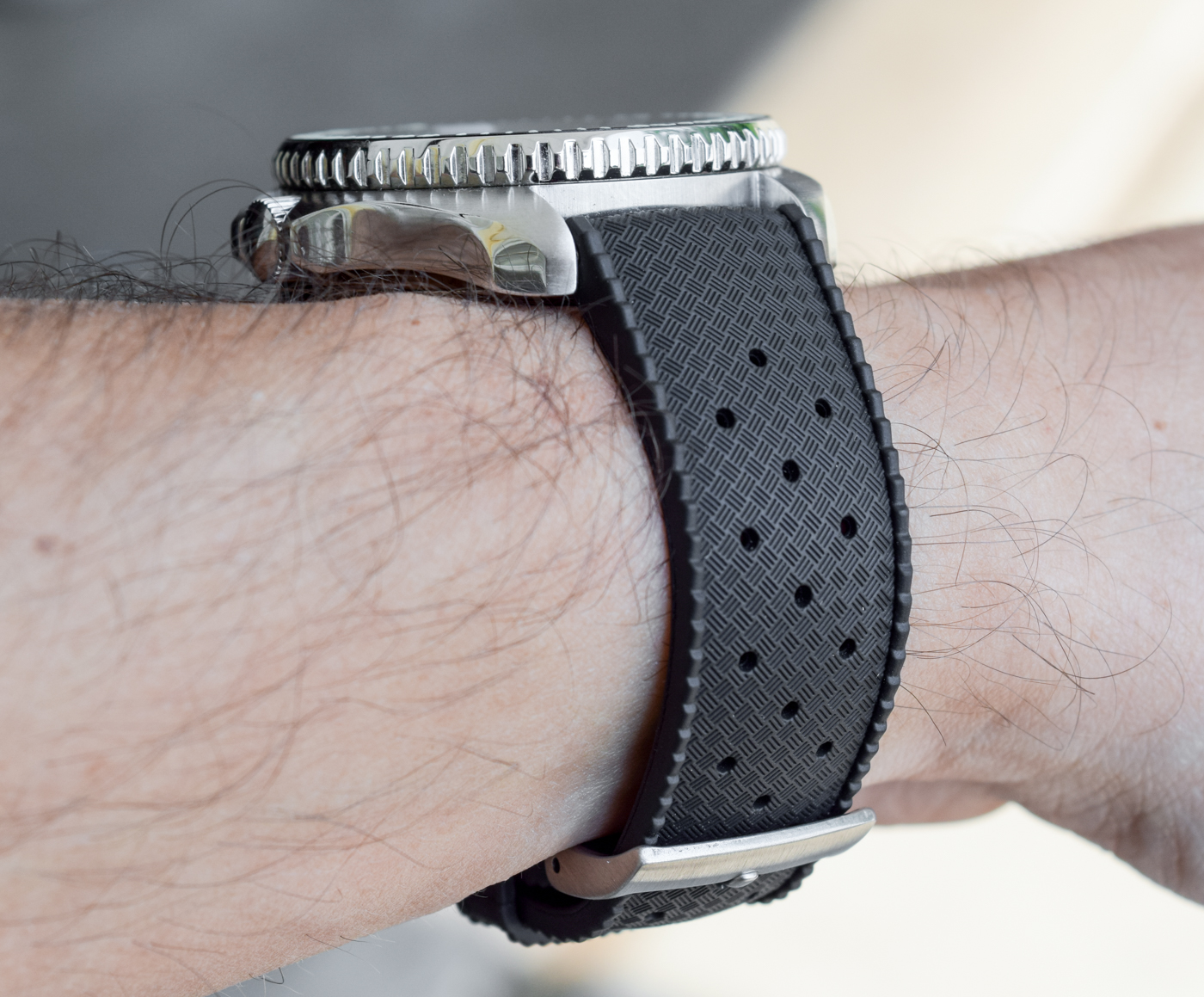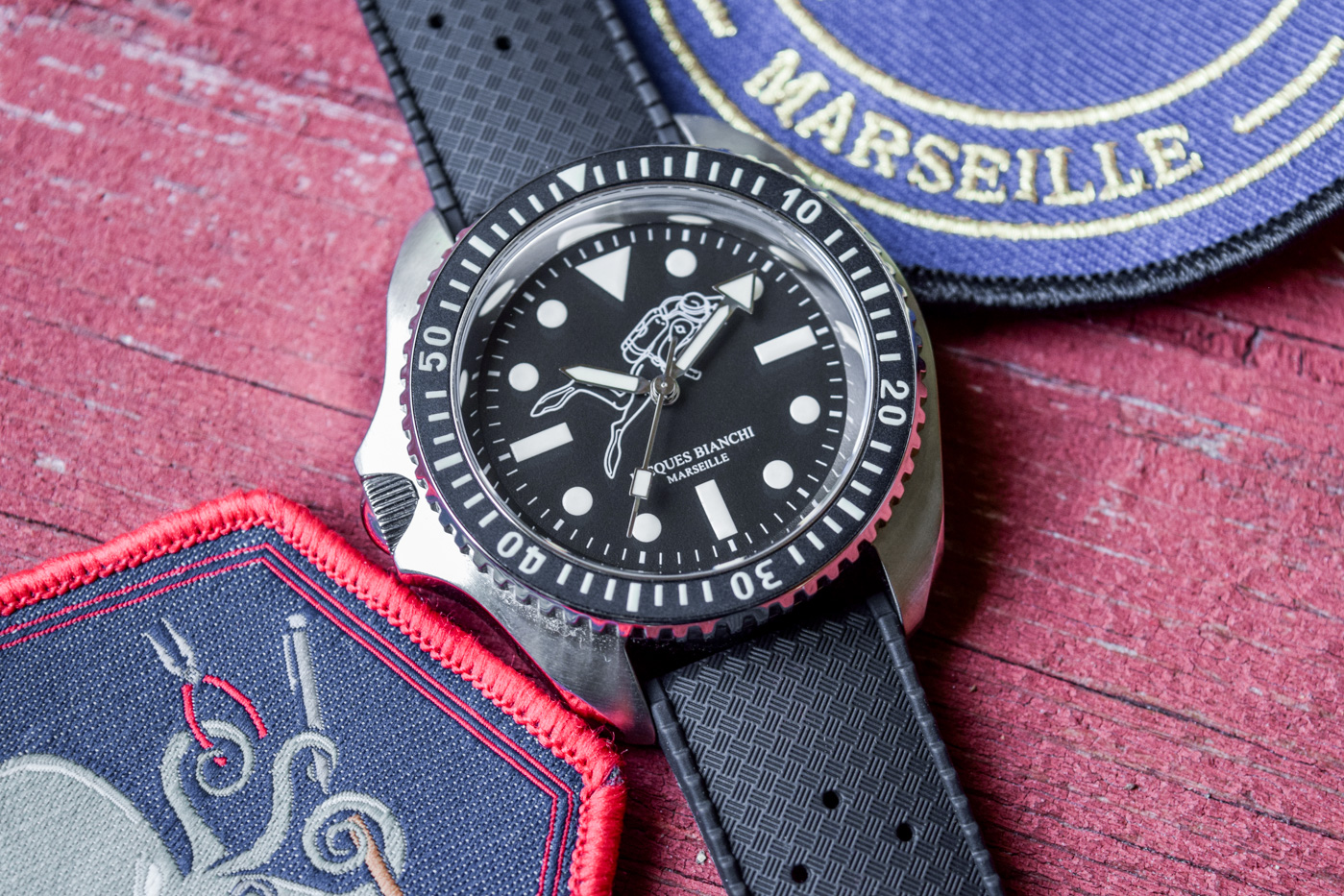
The commando diver’s watch: Of all the romantic, idealized, theoretical-use cases in the watch world, perhaps none is more endearing for a certain subset of watch nerds than the wetsuit-clad operator, dive knife between his teeth, stealing a moment in the darkness to set the bezel on his dive watch before submerging for a lengthy underwater swim to assault a clandestine maritime target. For the most part, the primary players here are well known, with the Rolex and Tudor Submariner, Omega Seamaster 300, and Blancpain Fifty Fathoms all benefiting massively in the collector market from their legendary associations with nautical military organizations around the world.
However, with the world of military procurement being often motivated by no power higher than the mighty dollar, the times in which current luxury names were issued by military organizations are, in most cases, decades past, leaving a slew of smaller, less expensive watchmakers to fill the void in a tactical silent world where a watch is still standard life support and mission-critical equipment.
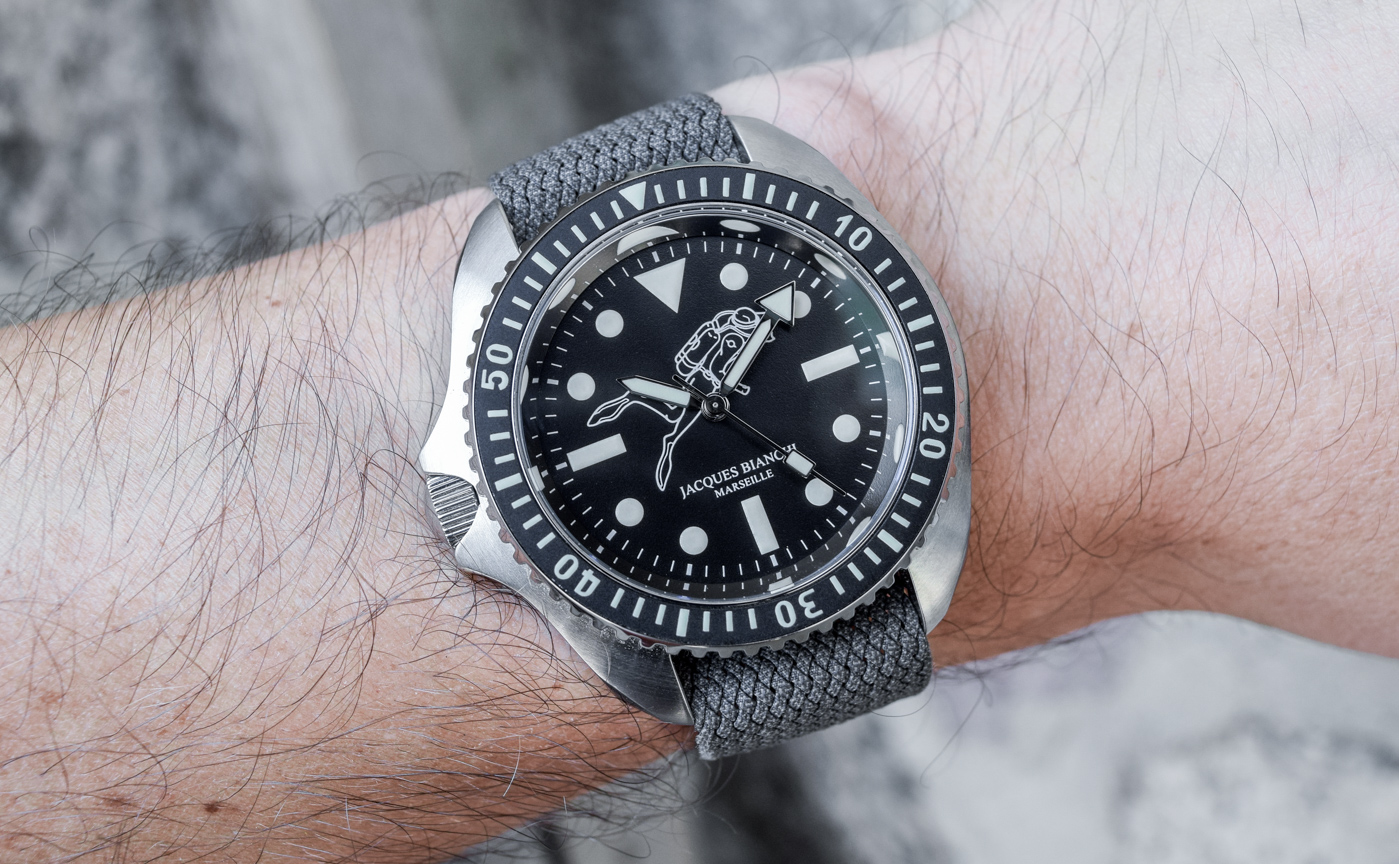
For the famously watch-centric French Navy (Marine Nationale) in the 1980s, diving forces were transitioning away from Tudor Submariners, which were rapidly becoming too precious for austere use, and experimenting with a variety of mass-market dive watches purchased in small lots more or less as necessary. In 1982, Jacques Bianchi — a Marseille-based watchmaker trusted by Comex for servicing its Submariners, as well as the Cousteau team’s many dive watches — produced a simple quartz diver’s watch in small numbers, the JB200, with a left-sided crown and a prominent frogman printed on the dial, with the majority of the first batch of watches being sold in local diving shops near Bianchi’s workshop. By the late 80s, however, the Marine Nationale confirmed the utility of Bianchi’s JB200 design by ordering several batches for use by various subsea-going units of French Navy, including the Commando Hubert, something like the U.S. Navy SEALs but with more baguettes and smaller coffee cups.
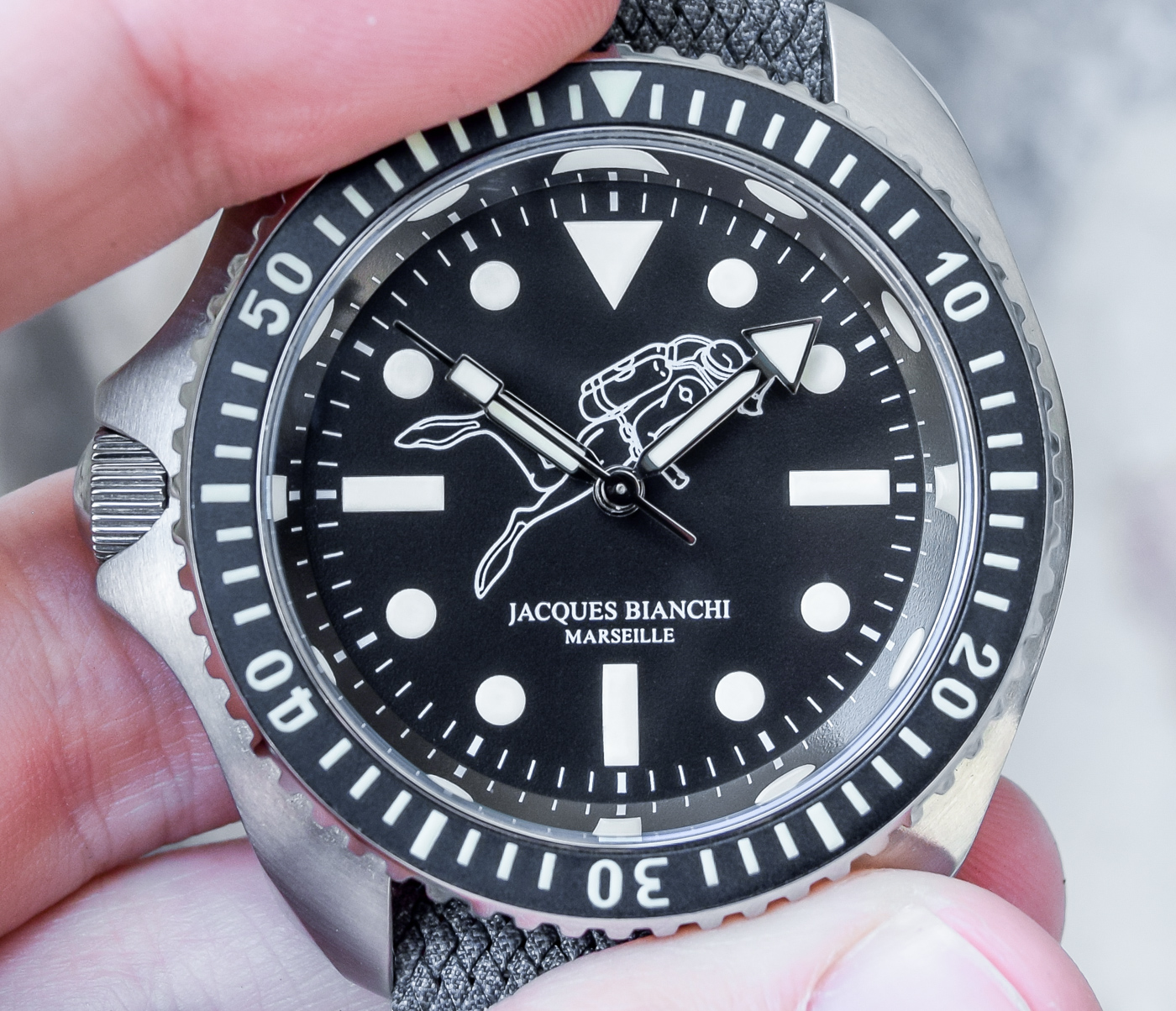
For decades to follow, the long-out-of-production JB200 lived in obscurity, the subject of discussion and interest only for the most dedicated military watch nerds in the darkest corners of mostly French watch-collecting military subfora. However, as a high tide floats all ships, the recent explosion in the popularity of military-issued timepieces like the aforementioned Rolex “Milsub” also sparked renewed intrigue around lesser-known — and infinitely more attainable — watches with military provenance, and soon the odd JB200 that made its way to French eBay or the watch forums was viciously scarfed up at rapidly ascending prices. I myself, a long time heavy-breathing military dive watch nerd, vividly remember attempting to purchase one such JB200 in well worn condition on French eBay around 2010 for a gasp-worthy 200 Euros, only to find someone else out there in the ether quicker to the Buy it Now draw, the memory — and associated trauma — forever burned into my synapses.
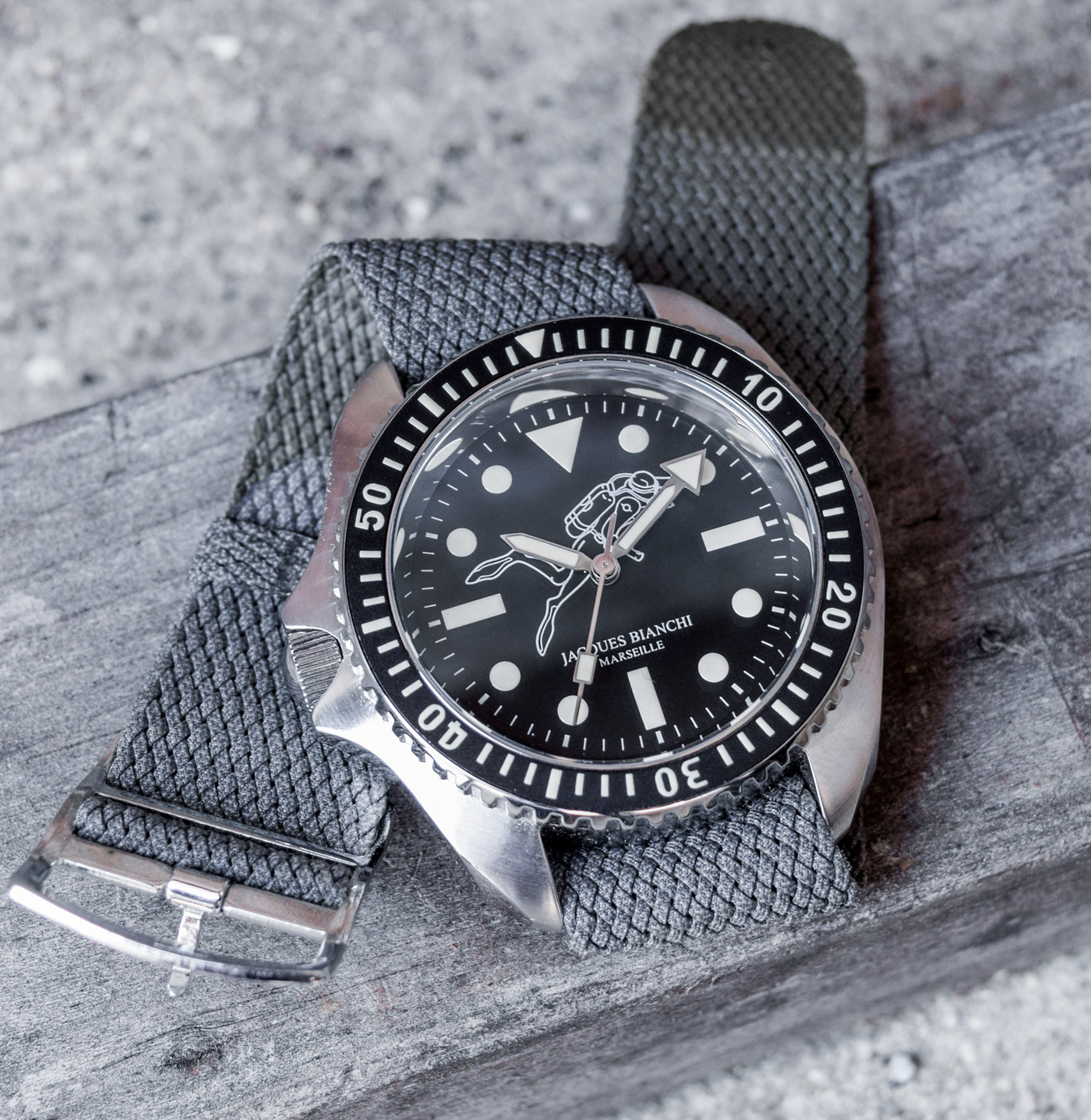
In 2021, Jacques Bianchi, still a fully operational master watchmaker in Marseille at 80 years young, elected to revive the JB200, a watch close to his heart, enlisting the help of Fabrice Pougez of MATWatches and Simo Tber, a digital marketing expert in the watch industry, to realize his dream — and likely also to capitalize on a market trend — using Kickstarter as a funding platform. All of which brings us to today, and my review of the new 2021 Jacques Bianchi JB200, which bears a few key differences to the original version while faithfully recreating the overall look and feel.
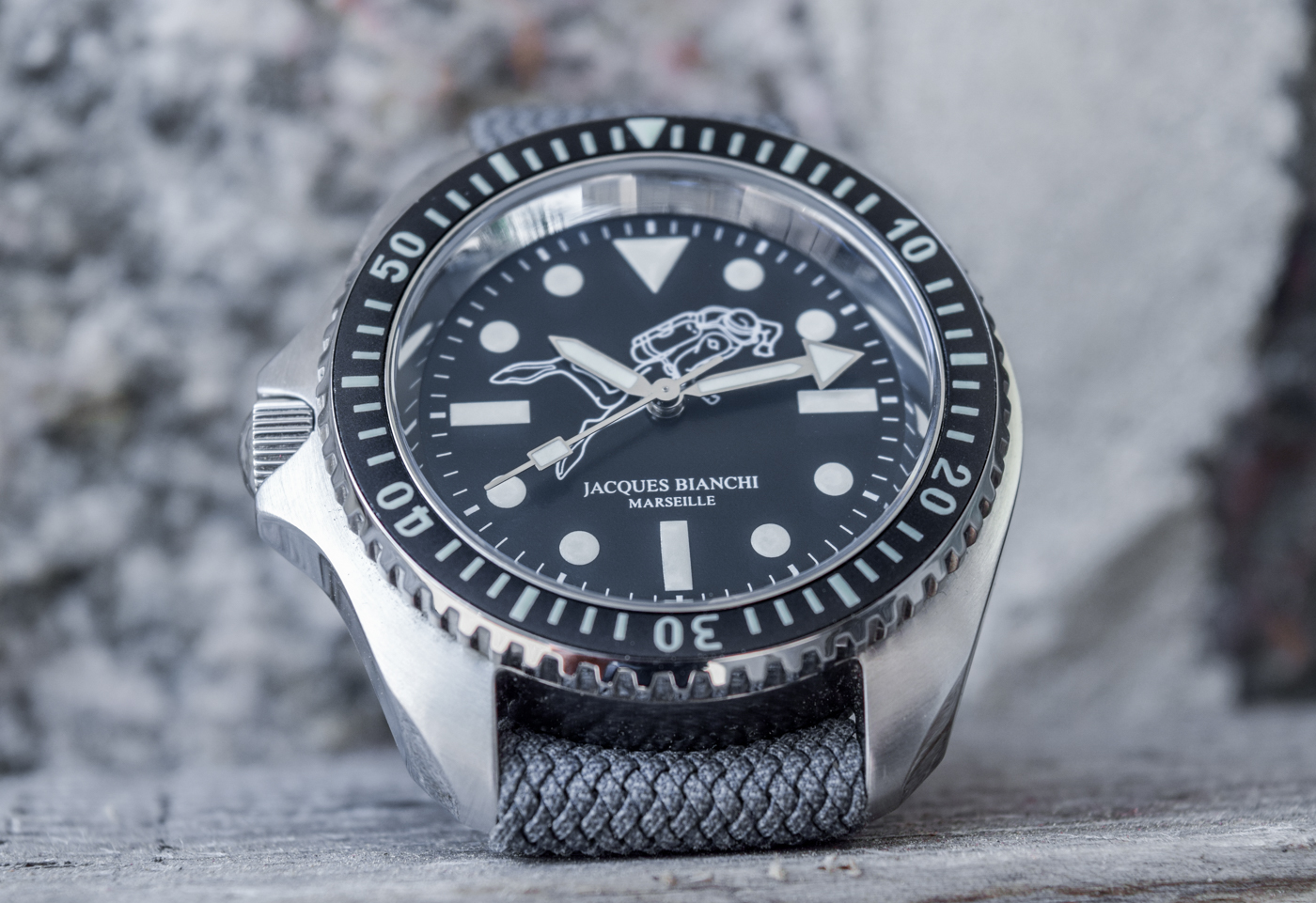
A Case for Destro
While in many ways resembling a prototypical “Skin Diver” of the 1970s that could have originated from any number of brands, the JB200 separates itself with a few elements that lend the watch its unique identity, perhaps most prominently the left-sided or destro — meaning “right” in Italian, implying right-wristed wear — screw-down winding crown at9 o’clock. It’s a design that, for me at least, is simply better in most cases when it comes to a watch designed for actual diving use, as the destro watch worn on the left wrist leaves no crown to attack the back of the hand while working, and also protects the crown and therefore the movement from the shocks associated with being on the business side of the wrist.
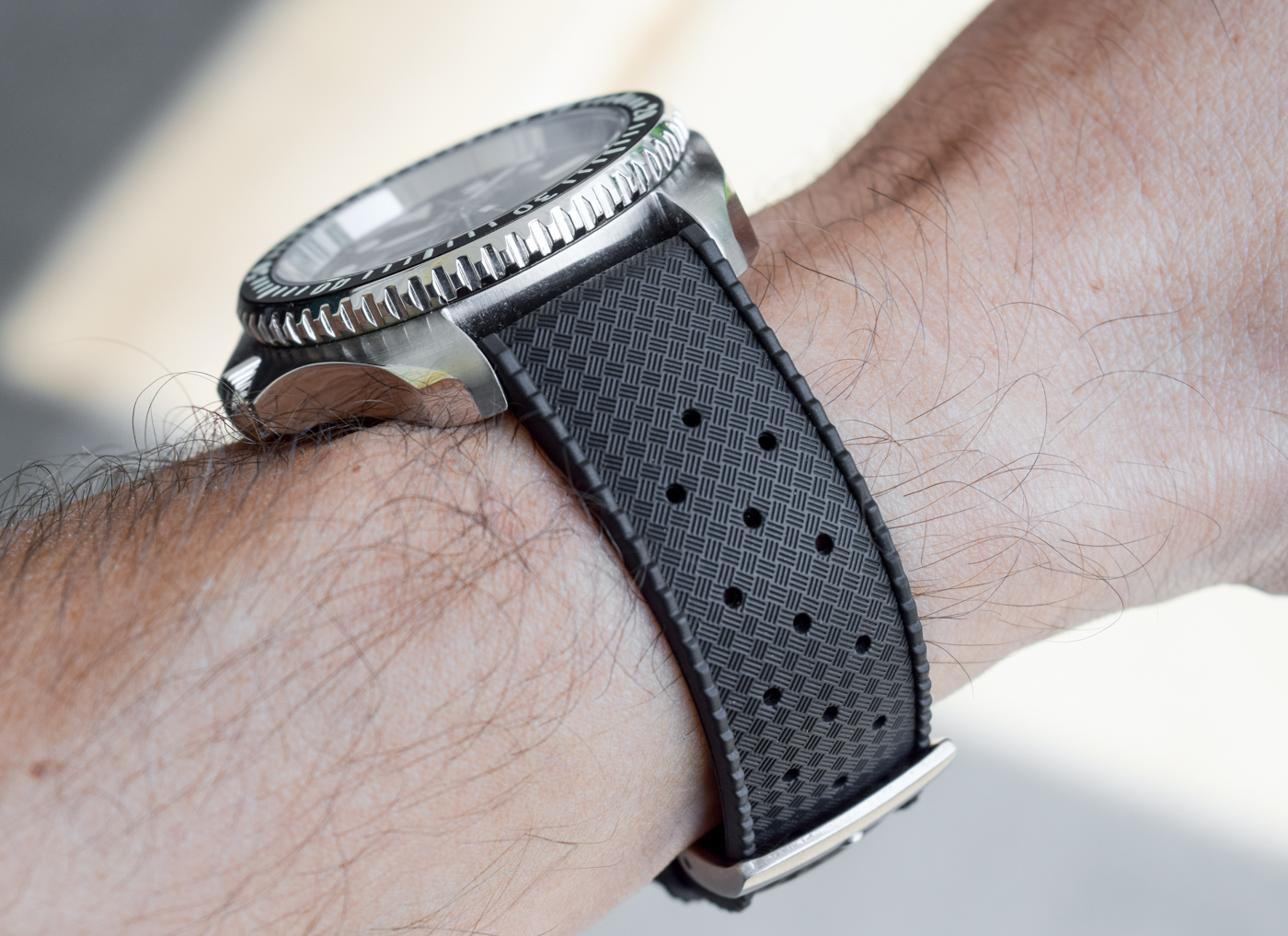
In terms of wear, this 42mm-wide by 47mm long by 13.3mm-tall is substantial, but the bezel’s 40mm diameter helps to make this watch look and feel more in line with the average 40mm diver on the wrist, a factor aided by the comfortable natural rubber strap executed in a “tropic” style, which also features quick release spring bars, though I also wore the watch on a variety of nylon straps as the rubber strap was, for me, just a bit long in the tail (or perhaps my wrist is simply too small at 6.25 inches).

Looking beyond the case orientation and wear, we have what is essentially a 1:1 take on the 42mm Monnin case design best known from the Heuer 844, as well as more obscure (but also awesome) watches like the CWC Royal Navy and SBS collection of divers, and of course the original JB200. In terms of finishing, the modern JB200 leans into the traditional mix of circular brushing on its forward-facing surfaces with polishing on the case sides, crown, and 60-click unidirectional diver’s elapsed time bezel, topped with an aluminum bezel insert heavily inlaid with Super-LumiNova, as opposed to the lumed acrylic insert on the original 1980s version. This insert does glow brightly, but I can’t help but wonder whether the Super-LumiNova indices, which actually stick out a bit from the base bezel insert material, might be more prone to being scratched or knocked loose compared to having indices buried under the relative safety of a layer of acrylic. Only time will tell, but I would have really liked to see a full acrylic version here as we’ve seen on certain CWC reissues in recent years.
In terms of upgrades over the original watch, the 2021 JB200 is complete with a flat sapphire crystal which does not, as far as I can tell, feature any type of anti-reflective coating, but still offers a clear view of the other most eye-catching attribute of this watch in the dial and its diver graphic.
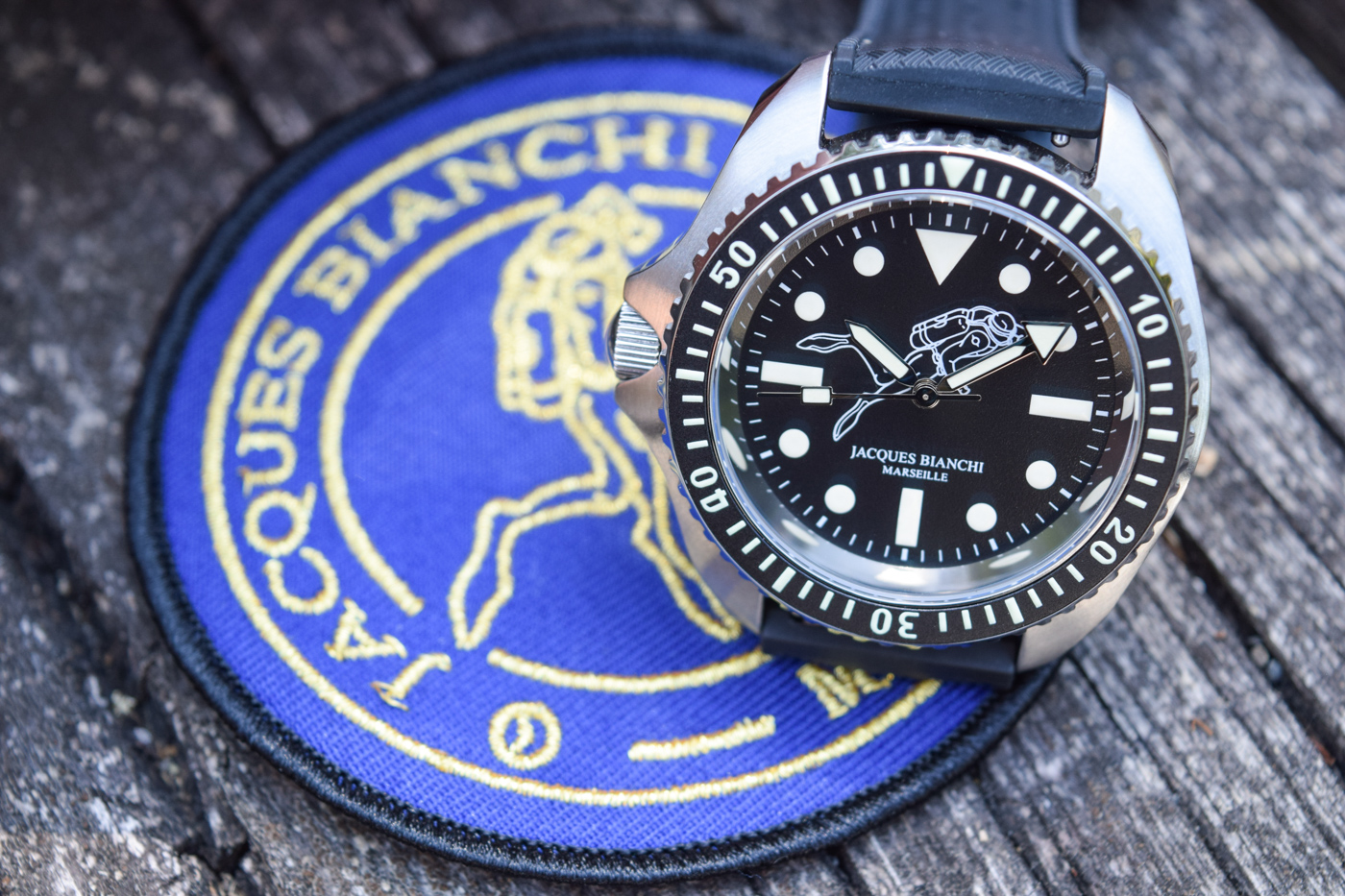
Scuba Dude?
Without a doubt, this watch’s most polarizing attribute is the frogman graphic printed in white over the very subtly granular matte black central dial surface. To put it mildly, it’s a quirky feature, but for lovers of diving-related nostalgia or hieroglyphics, the diver emblem does well in communicating the watch’s intended use case, and for me, especially considering the circular, rectangular, and triangular indices and straight-forward pencil and arrow hands, legibility is all but unaffected by what Vostok Amphibia lovers will already be calling the “Scuba Dude” on the dial. In terms of luminescent material, the modern JB200 goes for a shade of Super-LumiNova on the dial, hands, and bezel insert, which is slightly of the “faux patina” variety but not to the extent it should excessively bother the throngs who take issue with faux lume. In addition, the lume across the board is well-matched, glows brightly, and lasts reasonably long, though this watch falls short of some of the best divers from a certain Japanese brand you may well know.
While the diver graphic, indices, and hands are all close in keeping with the original 1980s JB200, the OG featured a date window at six, while the modern version goes without a date complication, always a welcome execution on a dive watch, in my book. Dial text is ever so slightly different, but it’s clear a central aspect of this reedition was to remain close to the original design, which was, at least for me, different in a very cool way.
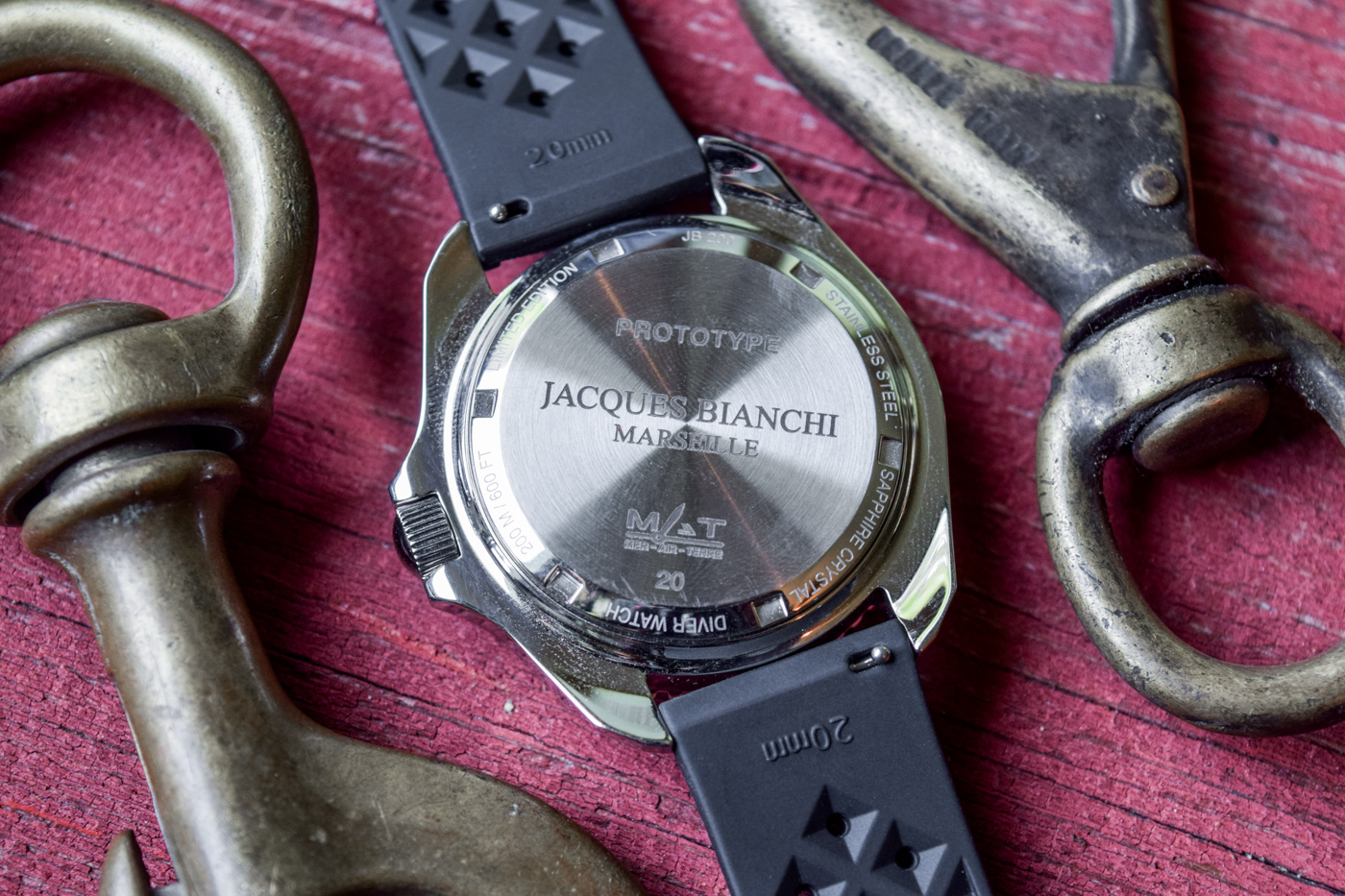
From French Quartz to Japanese Automatic
The final talking point in terms of variations between the original watch and this 2021 edition is the movement. Where the original watch made use of a quartz — muffled gasp — caliber, the modern version is clearly oriented toward enthusiasts and less toward penny-pinching military supply officers with a SII NH35 caliber, essentially Seiko’s third-party version of the 4R35 caliber found in many Seiko dive watches, such as the venerable Samurai collection. While nothing especially sexy, the NH35 is well regarded in terms of its reliability and durability and is capable of being highly regulated despite somewhat unimpressive out-of-the-box specifications for accuracy, though this JB200 prototype on test kept time in the mid-single digits per day.


Another point of note is that the NH35 beats away at 3 Hz or 21,600 VPH, so the sweep of the seconds hand, in this case, isn’t quite as smooth as what you’d get from a 4Hz caliber such as the Swiss ETA 2824 or Sellita SW200 many of you will be saying in the comments should have been used in this watch. However, if a smooth sweep is your number one priority for your relatively inexpensive heritage diving tool watch reissue, I’d argue you’re doing it wrong, and the NH35 is a solid movement in all respects, and right in line with the rugged, capable ethos behind this watch both in the 1980s and today.
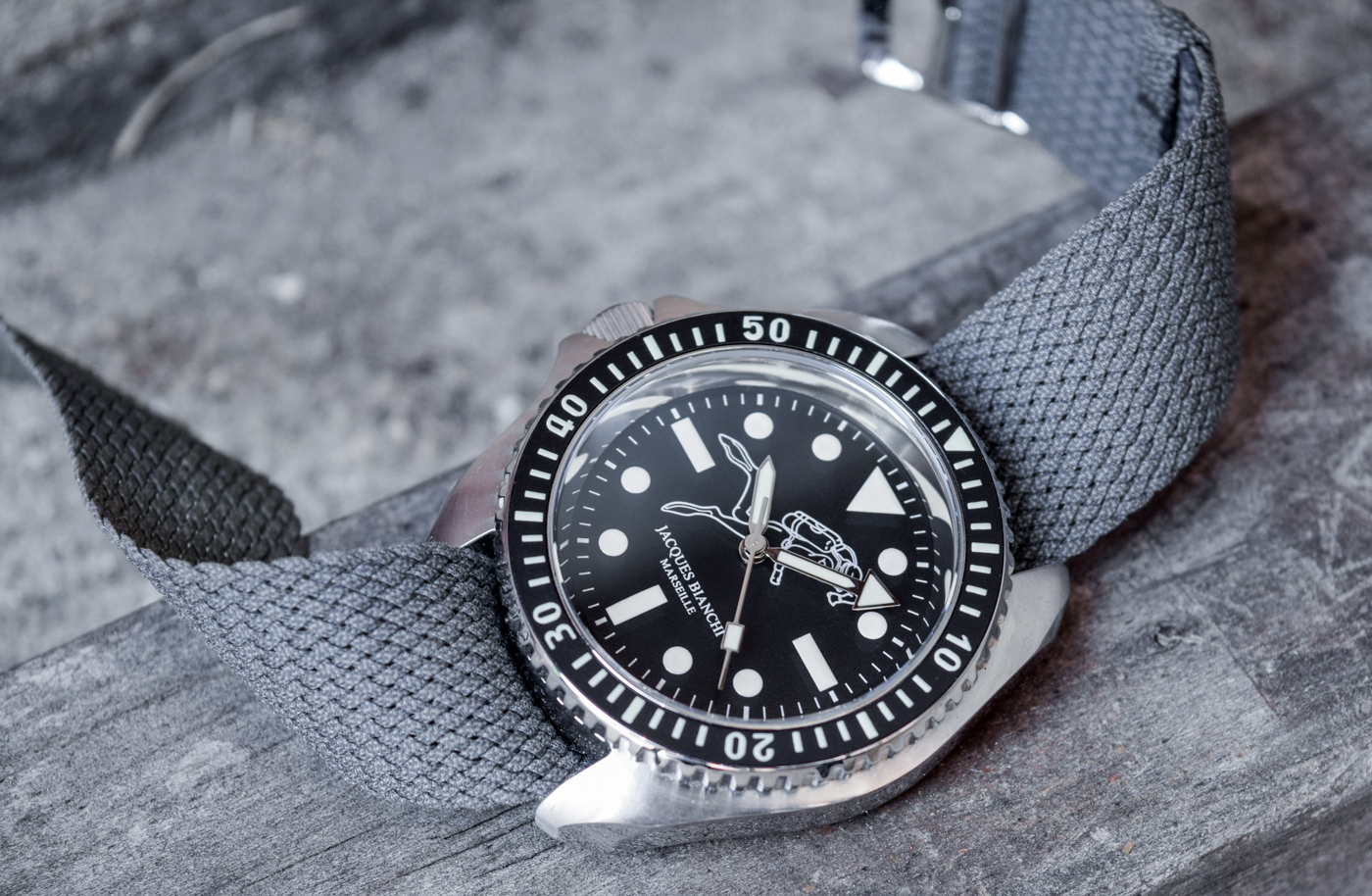
Just Another Heritage Reissue Diver?
At this point in my experience covering watches, it’s fair to say I have a reasonably good idea of the type of criticism most likely to be hurled at a new watch, and in this case, I’d expect to hear something along the lines of, “But this other random microbrand diver has a NH35 and costs a small and random amount less compared to the JB200.” Or perhaps, “For 600 Euros, this watch absolutely must include a 2824,” followed by something about how Swiss calibers are always better than Japanese movements. And if you fall into either of these camps or find the diver graphic on the dial repulsive, by all means, don’t buy the watch — and I’m frankly surprised you made it this far into the review.
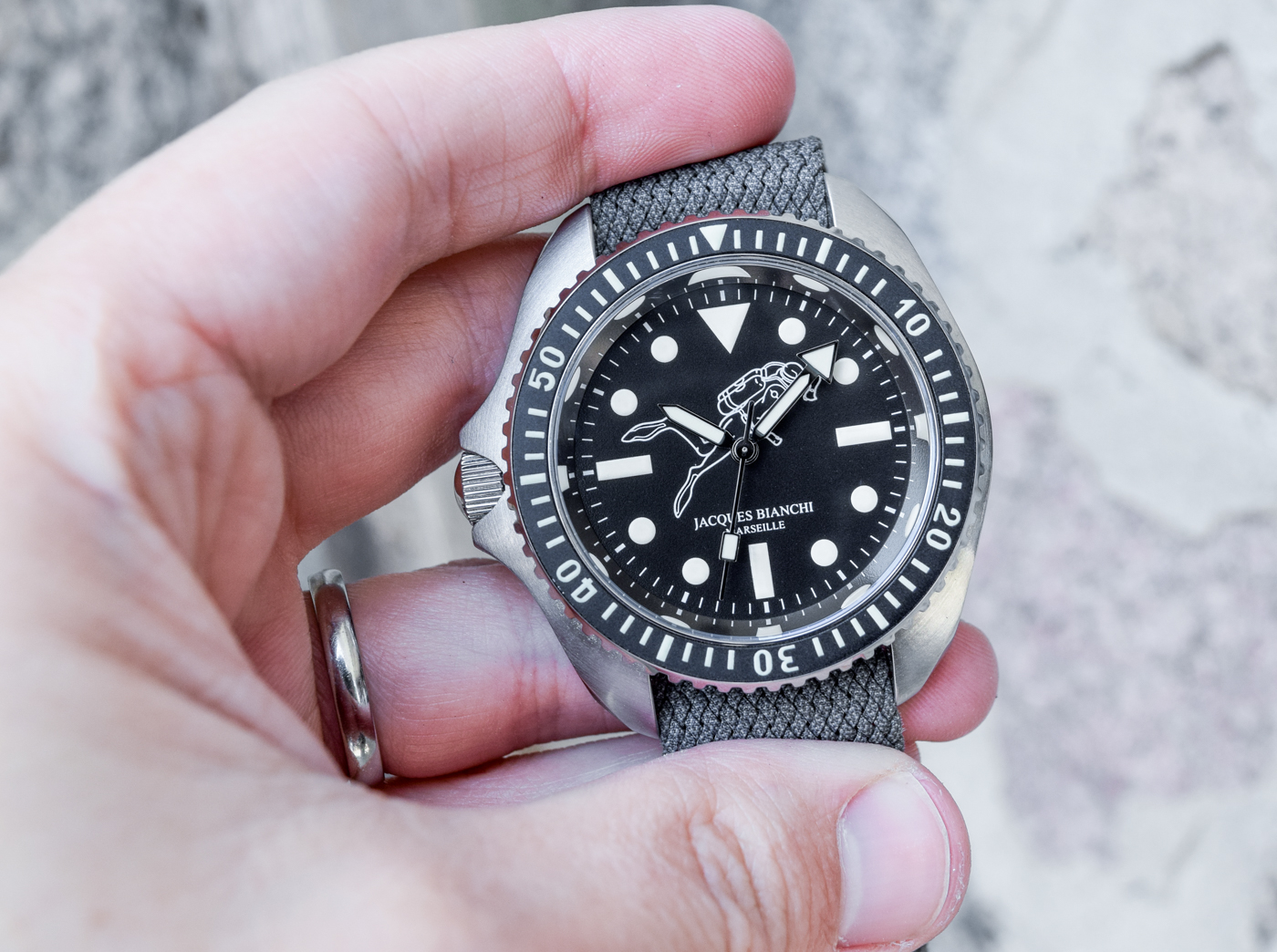
But for the rest of us, the new JB200 is a cool, fun, well made, and I’m going to say it, unique watch with its own intriguing history wrapped up both with the French military and also Jacques Bianchi and his unique experience in servicing historically prominent dive watches. And in a watch industry that can apparently support dozens of microbrands all making essentially the same Rolex knockoffs, I’m happy to see a tiny brand going out on a limb, making something interesting, and finding success with a rerelease that will by many multiples outweigh the success of the original watch it emulates, all while staying close to the history and heritage it hopes to honor. The Jacques Bianchi JB200 is available on Kickstarter at a presale price of 594 Euros or approximately $700 USD. Learn more at en.jacquesbianchi.com.
Necessary Data
>Brand: Jacques Bianchi Marseille
>Model: JB200
>Price: Kickstarter pre-order price of approximately $700 depending on exchange rates.
>Size: 42mm-wide (40mm at the bezel), 47mm lug-to-lug, and 13.3mm-thick.
>When the reviewer would personally wear it: Any time I’m feeling the need for something a bit more funky and different — a sort of palate cleanser that can still hold up in aquatic environments.
>Friend we’d recommend it to first: Military watch nerd or dive watch nerd. Going to have to be a nerd for this one.
>Best characteristic of watch: For me, the left-sided crown orientation is excellent in terms of comfort and something more brands should consider especially when it comes to dive watches.
>Worst characteristic of watch: I can’t help but wish the bezel insert had been acrylic with the luminescent material safely tucked away inside as it was on the original model.

